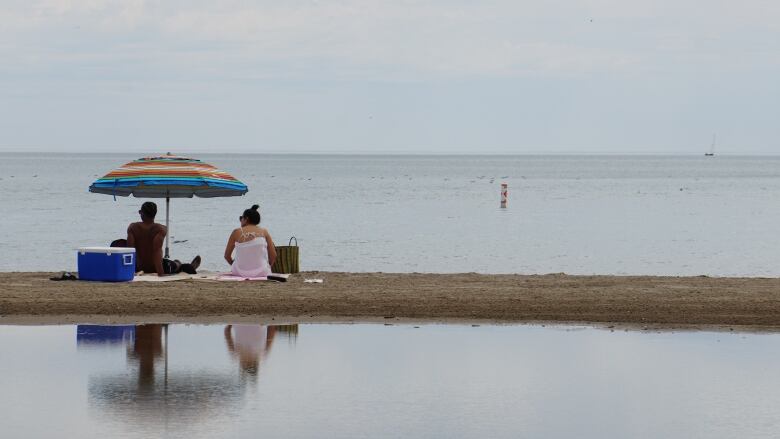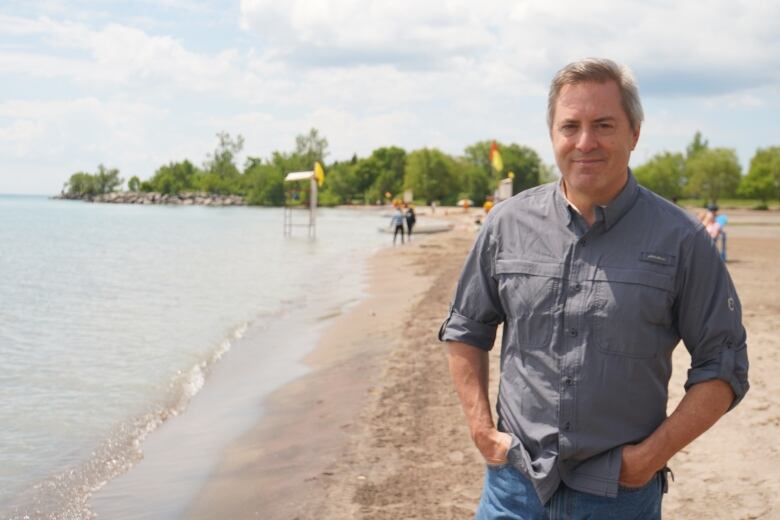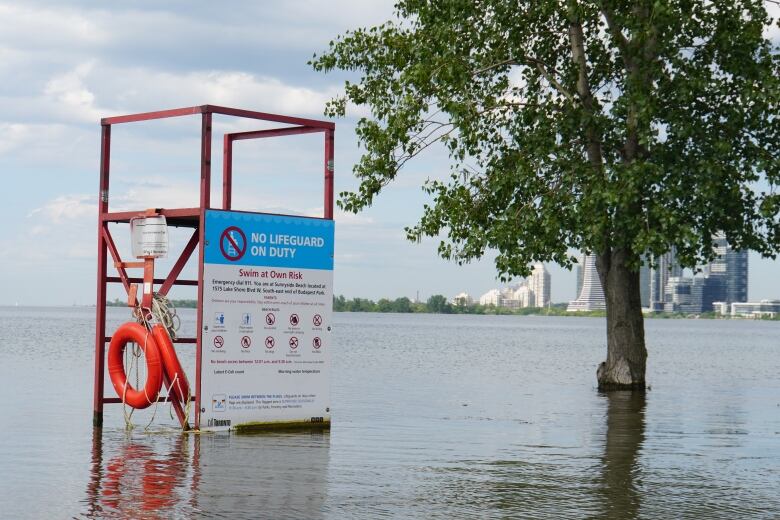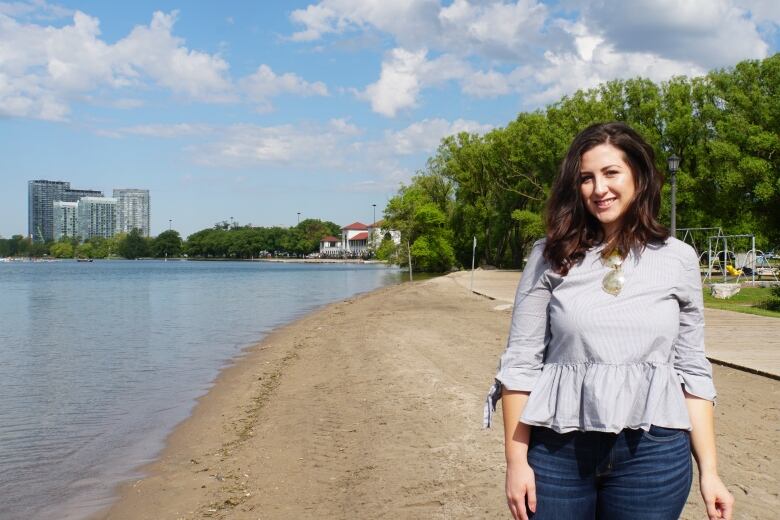As beach season begins, a mounting fight to keep shores swimmable
Footprint is a CBC series examining climate change issues and solutions across Canada

When Tom Edge goes to the beach, he's a bit of a buzzkill.
Instead of enjoying the sand and the waves, he's looking for garbage and contamination tampons, condoms, even syringes all signs of a possible sewage problem and an unhealthy beach.
"I think about different things than most people," he said. "Each beach is often unique in terms of local sources of contamination that could impact it."
Contamination is just one of the problemsOntario's beaches deal with, along with E. coli, receding shorelines, algae blooms and high water. The complications have closed beaches and made manyunswimmable. But some beach gurus likeEdge are trying their best to nurse these shores back to health.
Edge is a research scientist specializing in environmental microbiology and water-borne pathogens who used to work with Environment Canada's National Water Research Institute.

He championed the revival of Bluffer's Park Beachin Scarborough, Ont., often heralded as a model for beach restoration and resilience. The beach used to be tainted by poor water quality and was often closed.
"[It]was one of the worst Toronto beaches," said Edge, now an adjunct biology professor at McMaster University. "And it was a bit of a curiosity."
Years of research led Edge and others to discover several sources of E. coli on the beach: birds and runoff from a nearby marsh and parking lot. They came up with a plan to scare away birds and reconfigured the marsh and parking lot and water quality rebounded.
"It's now one of Toronto's best beaches."
Once they found the causes, they were able to come up with solutions.
And the beach rebounded.
Heres Tom explaining how they did it. @daybreaknorth pic.twitter.com/rl0MRHLh28
—@HaydnWattersNo 'smoking gun' to solve beach woes
As beaches contend with these complications, the search for solutionsto keep people swimming don't come easy.Climate change, and the extreme weather it brings, just make it worse.
Julie Kinzelmanconsiders herself a "beach detective." She scours beaches, looking for clues to find out what's behind a beach's problems.
"It's unlikely that there's some smoking gun or something singular," she said. "You're assembling this list of clues which might lead you to one thing or another."

Kinzelman's official title is lab director and research scientist with Racine's public health department in Wisconsin; she's helped restore three beaches there.That success has made her a consultant forbeach operators in Canada and around the world who are looking to restore.
"Idon't think that any [beach] is a total loss," she said. The last beach she restored in Racine took about sevenyears from start to finish.
But all take a lot of political will and money, which she admitscan be in short supply.
"You have to have somebody agree that they believe that it's a good idea to look for what's causing the failure in that knowing that if we look, we'll likely find something."
To learn more about what's causing beach problems, tap on the audio player below.
'Becoming the new normal'
Some beach problems are easier fixedthan others.
At Hamilton's Bayfront Beach,after a 25 year remediation effort, the city has basically given up on the hope of making it swimmabledue to it being "chronically polluted."
Record high water levels on several of the Great Lakes this year have caused beaches to shrink or even disappear in Niagara, around Kingston and in parts of Toronto.
Toronto's Sunnyside Beach on Lake Ontario has shrunk significantly,leaving behind just a small bar of sand in some parts. Trees and lifeguard chairs which would normally be on the beach are now floating in water. Sand space is at a premium.

Kelsey Scarfone travels to beaches around the countryas water programs manager forEnvironmental Defence. She helps run theBlue Flag program, which has been delayed on certain beaches this year as levels are just too high.
"When the water's this high, there's very little we can do except wait for it to go down," she said. "This is sort of becoming the new normal."
A new report released by the GreatLakes-St Lawrence Collaborative identified beaches as one of the main challenges in creating healthier Great Lakes.

Titled Action Plan 2030, the report outlinesa path to health for the Great Lakes a decade from now. When it comes to beaches, it calls for more transparency. Specific recommendations include:
- A new portal for beach quality information and status.
- New categorization system for beaches.
- Allowing new testing methods to spot E. coli, including advanced DNA testing.
Scarfoneapproves of the plan andthinks it is crucial to think long-term.
"We're going to have to have a way bigger investment in the Great Lakes and on our shorelines in order to protect them and keep them resilient if we're going to have beach days in the years to come."












_(720p).jpg)


 OFFICIAL HD MUSIC VIDEO.jpg)
.jpg)



























































































